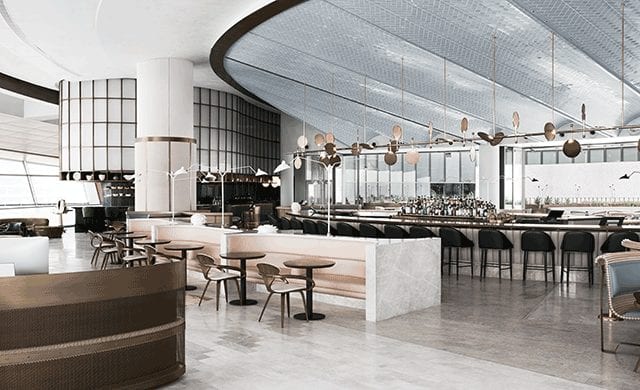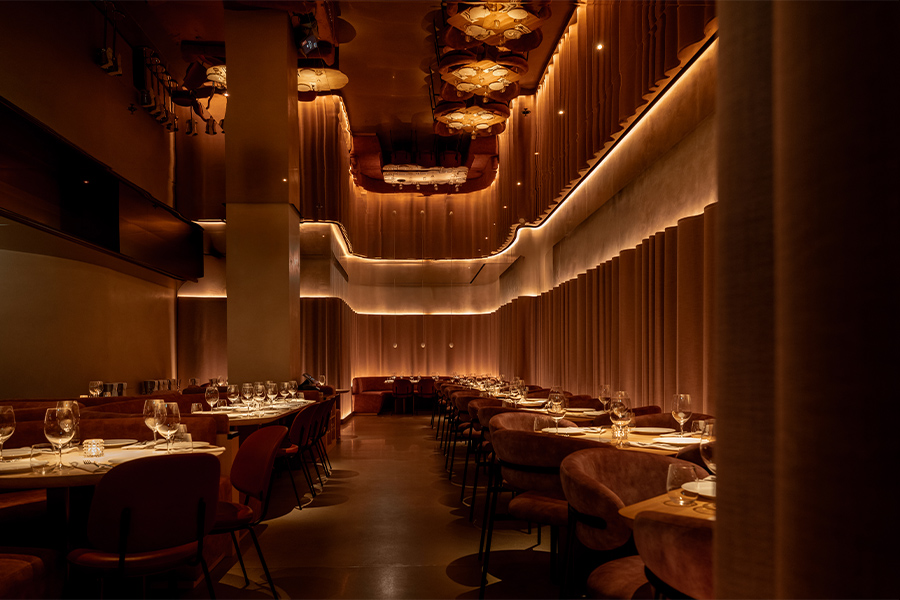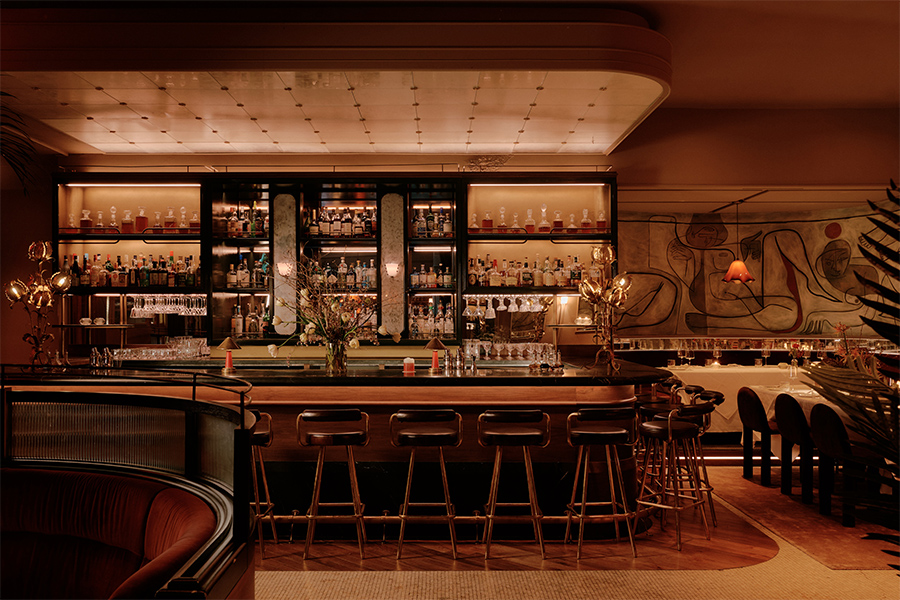When the Dubai Opera House needed an F&B spot to populate its newly added top floor, the owners turned to chef Sean Connolly, known for his popular restaurants in Australia, who in turn tapped frequent collaborator Jeremy Bull, principal of Sydney firm Alexander & Co., to take on the unusually bow-shaped venue that seats up to 350 guests.
Bull conceived the restaurant so “that it didn’t have only one genre,” he says. “It was a bit more out of the box, and it didn’t have a clear precedent.” He chose 20th-century furniture like bentwood and green couches to evoke a 1960s salon, opting for a restrained elegance in glitzy Dubai. High-backed blush pink leather banquettes carve out intimate alcoves, while other nuances, including a fluted glass and brass structure above the main bar suggests a brasserie. Likewise, the spider-like white lights suspended above the banquettes “add to the strangeness and provocative quality of the venue,” he says.
Bull wanted everything to speak to the sea, so he chose pink and gray tones to mimic the delicate interiors of an oyster—“all quite soft and floating,” he says—that fuse with ocean blue carpeting and the matte and glossy gray ceramic-tiled ceiling that nods to the oyster’s textured exterior and its fan-like shape. Meanwhile, two prominent Australian artists, Jacqui Fink and Tracey Deep, were commissioned to create their own take on marine life. Fink, a knitter in mega scale, produced a hanging rope-like sculpture in Merino wool to look like a sea creature, while Deep’s three pieces are modeled after jellyfish and made with chrome and safety pins. For some “diversity in the experience,” the bathroom reception area is dressed in black and gold. “Not everything is oceanic and dreamy, there is a dark and more nocturnal” edge to the ocean, as well, Bull explains.
However, the back courtyard proved to be a challenge, as it didn’t have the capacity to withstand heavy loads, which meant trees and walls couldn’t be added. Instead, Bull used broken ceramic Spanish tile in muted tones to create a curved barrier. “To convince the locals [the restaurant] was going to look luxurious was a big win,” Bull admits. “It’s a beautiful, abstract sort of space.”



